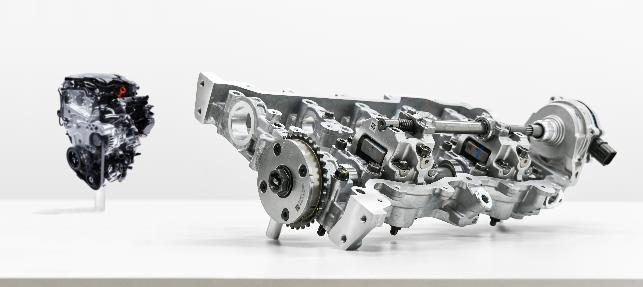Recently, Dongfeng Yueda Kia announced that the domestic model of its global strategic model ALL NEW K5 is named “Kaiku” in Chinese, and simultaneously opened pre-sales. It is expected to be launched in China in September. As the flagship model of Dongfeng Yueda Kia, the biggest technical highlight of Kaiku is that it is equipped with the world’s first fourth-generation engine and adopts CVVD system to realize synchronous improvement of power performance and fuel efficiency.

The CVVD system is mainly composed of two core technologies: DVVT intake and exhaust double variable valve timing technology that can control the timing of valve opening and closing, and CVVD continuous variable valve duration that can control the intake duration to achieve the optimal two core technologies. The mainstream DVVT+CVVL combination solves the problem of insufficient air intake through the valve opening depth, and realizes a new breakthrough in the engine’s valve control technology field.
It is reported that the CVVD system will be the first to be applied to the Kaiku 1.5T turbocharged engine, with a maximum power of 170Ps, a maximum torque of 253N m, and a fuel consumption as low as 5.7L per 100 kilometers under comprehensive operating conditions. Compared with mainstream models of the same level, Kaiku not only ensures sufficient power but also takes into account fuel economy, and is in a leading position in many core technical parameters. So how did CVVD enable Kaiku to perform so well?
In the long history of engine technology development, the contradiction between power performance and fuel economy has always been the core of automotive engine technology research. For an ordinary four-stroke engine, chemical energy (gasoline) can be converted into mechanical energy to drive the vehicle forward through intake, compression, work, and exhaust. If the engine can reasonably adjust the valve opening and closing timing according to different power demands during the intake and exhaust process, performance and fuel efficiency can be greatly improved, just like marathon runners can complete long-distance races by adjusting different breathing rhythms.
Most of the valve control systems on the market now control the timing of the valve opening and closing through the camshaft, such as BMW Valvetronic technology and Cadillac Tripower electronic valve control technology. They can realize stepless adjustment of valve lift control, but they cannot control the duration of valve opening. , and Kia CVVD can do this.
For example, in the case of constant speed driving with low engine load, CVVD technology can continue the opening timing of the intake valve to the middle and late stages of the compression stroke, which is equivalent to “spit out” part of the mixture, reducing the resistance during compression and effectively improving fuel consumption; When the vehicle starts to accelerate, CVVD technology will close the intake valve at the beginning of the engine compression stroke, allowing the engine to “eat more” per unit time, thereby increasing engine torque and improving acceleration performance.

Just because the CVVD technology can realize the completely independent control of the opening timing and closing timing of the intake valve, the engine compression ratio can be flexibly adjusted within 4:1 to 10.5:1, and three kinds of Atkinson, Otto and Miller can be realized. Free switching under engine cycle state. When the vehicle is running at a constant speed, the engine equipped with CVVD technology can be switched to the Atkinson cycle and the Miller cycle with an effective compression ratio smaller than the expansion ratio, so that it can “eat less and dry more” to achieve high fuel economy; When the vehicle accelerates sharply, the engine can resume the normal Otto cycle, providing strong power and torque output to the vehicle.
At present, emission regulations are becoming increasingly stringent, and it is the tireless pursuit of engineers to innovate valve control technology on the basis of not being able to increase engine displacement. The CVVD technology breaks through the bottleneck and limitation of engine variable valve control technology so far, which will not only lead Dongfeng Yueda Kia to a leading position in the engine field, but also provide more possibilities for the future technical development of traditional gasoline engines.




